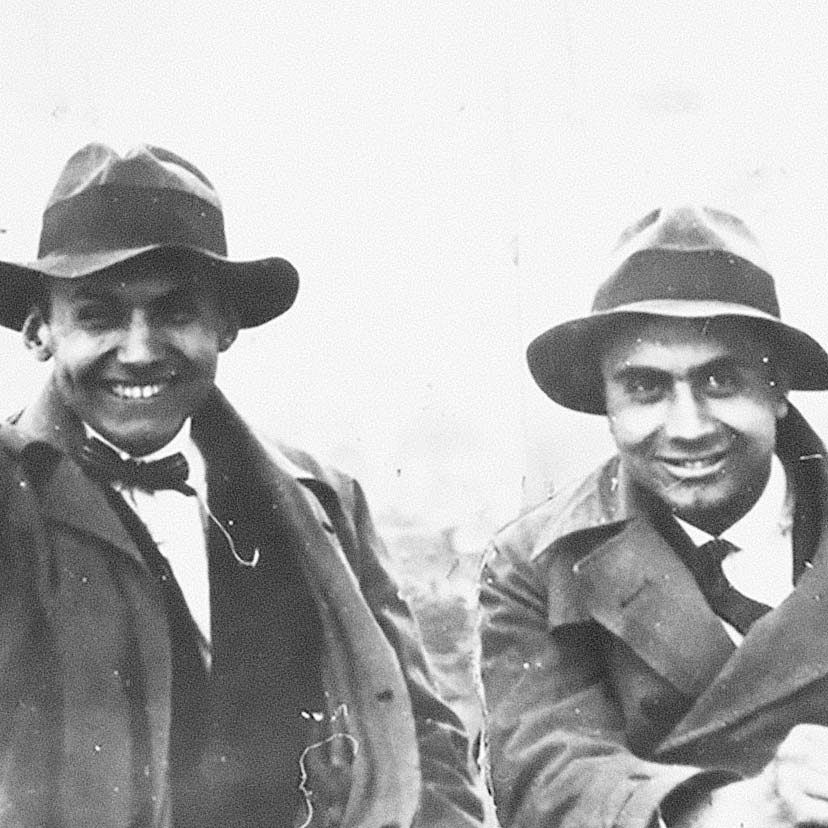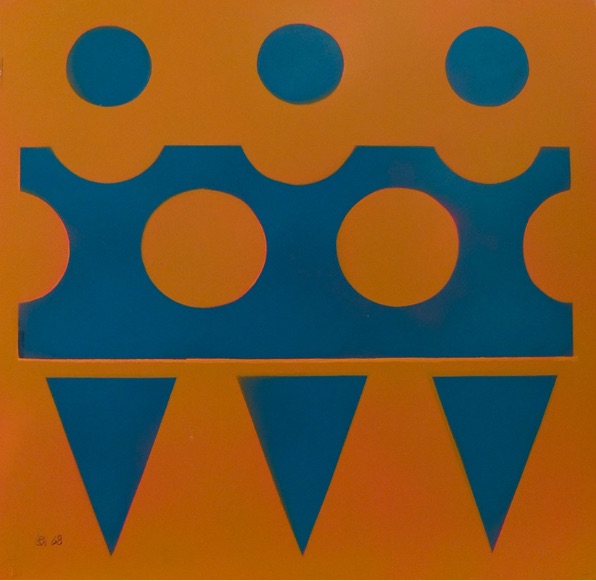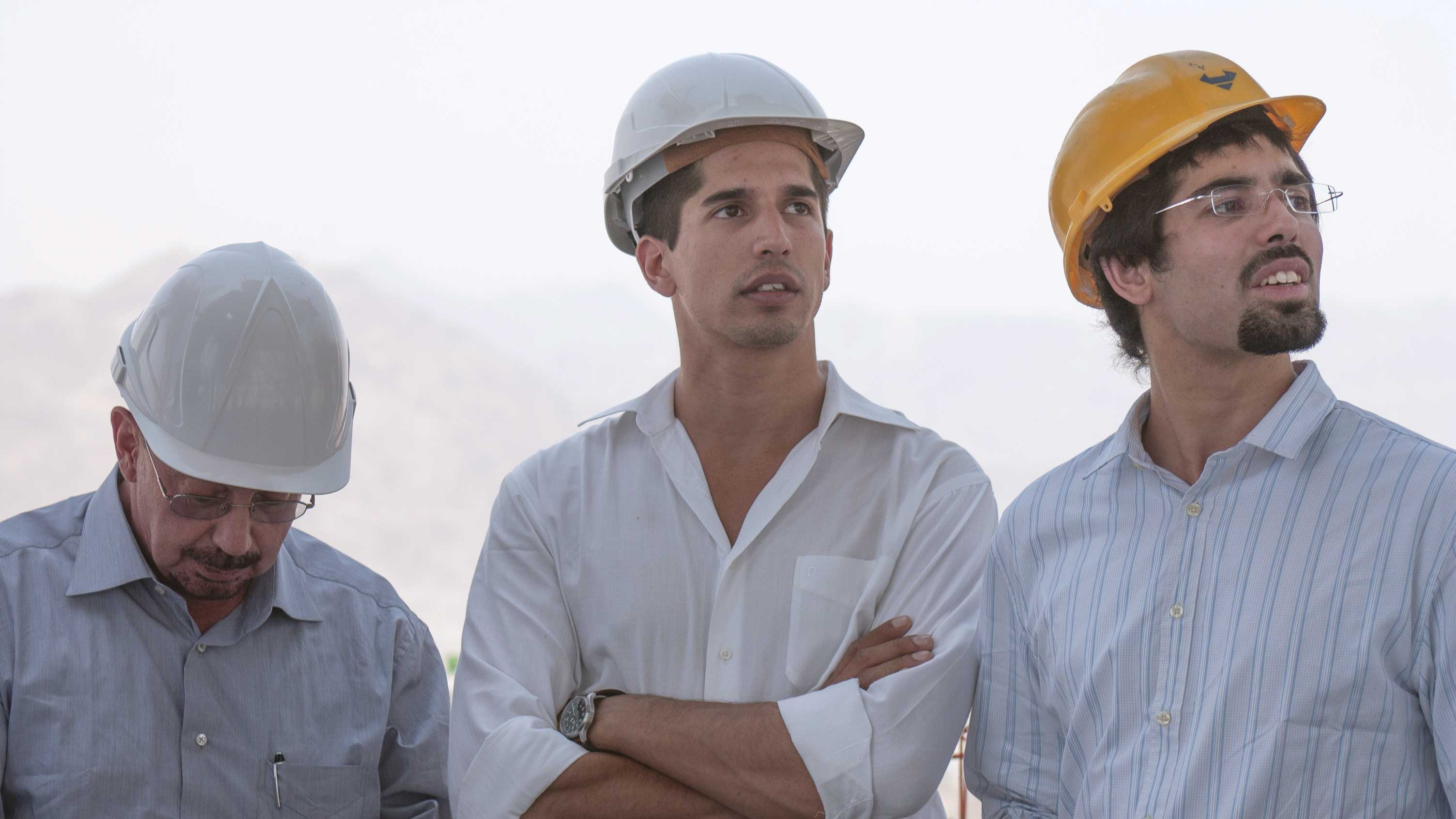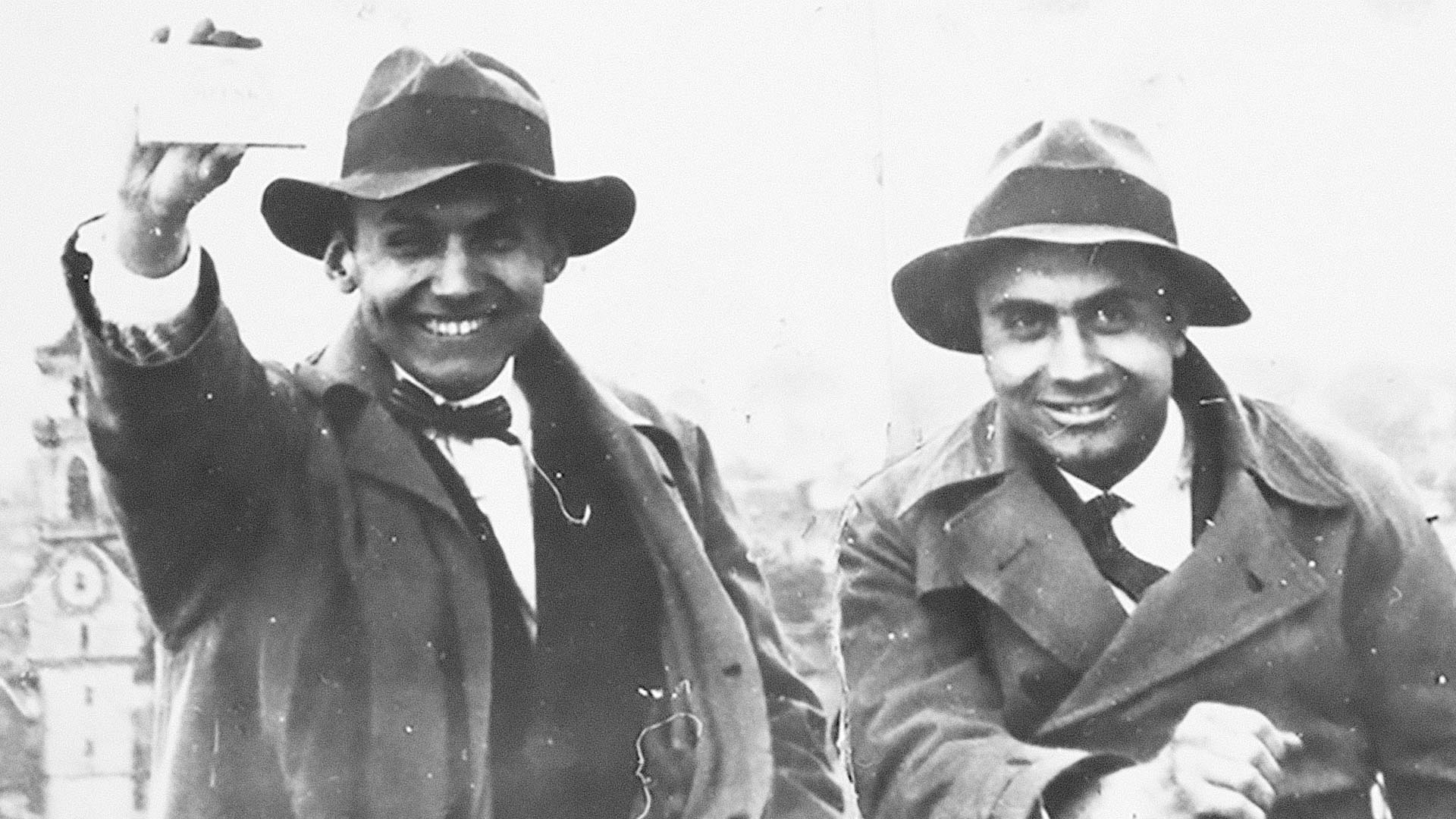
1926
The Rasch brothers
The brothers Heinz (1902–1996) and Bodo (1903–1995) Rasch founded their architecture studio in Stuttgart in 1926. Versatile, talented and creative, they shared a strong interest in the ideas of the modernist movement and soon numbered among the major protagonists of “Neues Bauen” (the “New Building” style) in southwest Germany. They embodied a visionary, ingenious spirit paired with solution-driven engineering – a creative approach that is also reflected in their graphic and product design (furniture).
![Der Stuhl: Heinz und Bodo Rasch - Stuttgart, Akademischer Verlag Dr. Fritz Wedekind [1928]](https://www.sl-rasch.com/wp-content/uploads/2019/07/der-stuhl_3.jpg) Der Stuhl: Heinz und Bodo Rasch
Der Stuhl: Heinz und Bodo Rasch
Stuttgart, Akademischer Verlag Dr. Fritz Wedekind [1928]
Their studio soon turned into an important gathering place for Stuttgart’s design and architecture scene. The Rasch brothers maintained friendly contacts with avant-garde artists such as Otto Dix. During the construction period of the Weissenhof Estate in Stuttgart, the siblings met brilliant architects such as Walter Gropius, Bruno Taut and Martin Wagner. At this time, Mies van der Rohe, the important director of the building exhibition, used the Rasch studio for a short time and the two brothers designed a model unit in the central apartment block of the exhibition as well as one for Peter Behrens’ apartment block. Their designs for suspended houses and Bodo Rasch’s ideas for modular or air-filled building structures were revolutionary and unique in the architectural history of the 20th century.
1940
Lilo Rasch-Naegele

Lilo Rasch-Naegele, who married Bodo Rasch in 1940, ran her own drawing studio in Stuttgart’s Reinsburgstrasse and was a sought-after commercial artist, fashion illustrator and book illustrator. She worked for prestigious firms from the textile and publishing sectors, including Gröber-Neufra, ARAL, Schiesser and Elbeo, the advertising department of Stern news magazine, various publishing houses (especially Boje Kurt Desch, Wilhelm Goldmann, Albert Müller, Carl Überreuther and Ullstein-Propyläen) and the Stuttgarter Zeitung newspaper.
 Lilo Rasch-Naegele: Mercédès Jellinek
Lilo Rasch-Naegele: Mercédès Jellinek
Magazine cover of the Mercedes-Benz Illustrierte magazine published to mark the International Motor Show 1955
From 1950 on, the new family villa in Oberaichen near Stuttgart designed by her husband Bodo Rasch became the focal point of Lilo Rasch-Naegele’s life and work. The move to her “art factory”, as she referred to her home and studio in Wispelwald, marked the beginning of a new phase in Lilo Rasch-Naegele’s creative work: she began experimenting with oil paint. The artist’s non-commercial graphic work is no less extensive and stylistically eclectic.
 Blue on ocher yellow
Blue on ocher yellow
1968
 Purple on green
Purple on green
1968
 Orange on blue
Orange on blue
1968
1967
Frei Otto and Bodo Rasch – giving shape to vision

Bodo Rasch Junior, the son of Bodo Rasch Senior and Lilo Rasch-Naegele, began working for Frei Otto while still a student – initially at the University of Stuttgart’s Institute for Lightweight Structures and from 1969 on at the design and development firm Atelier Frei Otto Warmbronn. Rasch oversaw the construction of the Institute’s new building (originally the tensile structure was the prototype for the German pavilion at Expo 1967 in Montreal) and was project leader for the first convertible large-scale umbrellas that Frei Otto designed and constructed for Germany’s National Garden Show in Cologne in 1971. In 1974, he took part in an urban planning competition to design pilgrim accommodation for the tent city in Mina Valley near Mecca. Bodo Rasch converted to Islam in the same year and assumed the additional first name Mahmoud. His close collaboration with Frei Otto led to joint projects and grew into a close friendship. Frei Otto was a consultant on Rasch’s later team until he passed away.


 Seidenhaut
Seidenhaut
Model study 01 – 03
Today
From Rasch & Associates to SL Rasch GmbH

Dr Mahmoud Bodo Rasch founded architectural practice Rasch & Associates in 1980 and the firm Sonderkonstruktionen und Leichtbau (SL GmbH) in 1991, which was renamed SL Rasch GmbH Special & Lightweight Structures in 1998. Rasch’s many years of engagement in the Near East and the implementation of extremely adaptable lightweight structures have led to some spectacular major projects for the holy sites of Islam, including the world’s biggest clock tower in Mecca and the Medina Piazza Shading Project. Today the company is headed by the founder’s son, Mustafa Rasch.




